Blog
Why Choose Group Therapy for Anxiety Treatment
Group therapy can be an effective treatment option for individuals experiencing anxiety. It is especially helpful for affordable weekly support when individual therapy may not be accessible.
How to Create a Fear Hierarchy for OCD treatment
A fear hierarchy, also known as a hierarchy of fears or exposure hierarchy, is a tool used in Exposure Response Prevention (ERP) and Cognitive-Behavioral Therapy (CBT) to help individuals with obsessive-compulsive disorder (OCD) gradually confront their fears and anxieties. The hierarchy is a list of situations, objects, or activities that trigger obsessive thoughts and compulsive behaviors, ranked from least to most anxiety-provoking.
The Role of Parents in Child Anxiety Treatment
At Kairos Wellness Collective, we consider the role of parents in child therapy to be crucial, and a significant predictor of positive outcome. Primary caregivers have a significant influence on their child's emotional, social, and cognitive development.
Stages of Therapeutic Change during Anxiety Treatment
The stages of therapeutic change are a framework for understanding the process of personal growth and change that occurs during therapy. With Anxiety Treatment, it is incredibly important that the client and therapist align as to which stage the client finds themselves in. A therapist may push a client away from entrenched patterns, but cannot force changes. Very importantly, a client must realize that what they have been doing thus far has not been serving them.
Snapchat if you have OCD
While using Snapchat, the most used social media app for young Americans, can be a fun and entertaining experience, but can also trigger obsessive-compulsive behaviors in individuals with OCD. In this blog, we will discuss some of the behaviors on Snapchat that may be triggering for individuals with OCD and provide some tips on how to manage these behaviors.
When your relationship with your current therapist has run its course: Anxiety treatment and the power of switching up providers
It is not uncommon for a person's relationship with their therapist to change over time, and sometimes it may become apparent that the relationship has run its course. Here are some signs that it may be time to consider switching to a new therapist.
TikTok use if you have OCD
TikTok is a social media app that has taken the world by storm in recent years. With over a billion active users worldwide, TikTok has quickly become one of the most popular apps in the world, and it's not hard to see why. The app is designed to be incredibly addictive, and this is no accident. In this blog, we'll explore how TikTok is designed to be addictive and what this means for its users (especially those with OCD).
Snapchat Triggers for OCD
Obsessive-Compulsive Disorder (OCD) is a mental health condition characterized by intrusive, unwanted thoughts (obsessions) and repetitive, ritualistic behaviors (compulsions) that are performed in an attempt to alleviate anxiety or prevent a feared outcome. While OCD can manifest in many different ways, some individuals with OCD may experience compulsions related to their use of social media, such as Snapchat.
TikTok and Social Media Content about OCD
TikTok has become one of the most popular social media platforms, with millions of users sharing short videos on a wide range of topics. While many of these videos are entertaining or informative, some TikTok content has raised concerns among mental health professionals, particularly in regards to Obsessive-Compulsive Disorder (OCD).
A Brief History of Obsessive Compulsive Disorder
The diagnosis and understanding of OCD has evolved significantly over time, from ancient civilizations' descriptions of obsessive-compulsive-like symptoms to the current understanding of the disorder as a distinct and treatable mental health condition. Ongoing research and treatment developments continue to improve our understanding of OCD and provide effective treatment options for those who suffer from the disorder.
What is Selective Mutism?
Selective Mutism (SM) is a rare anxiety disorder that typically affects children, but can also affect adults. Children with SM are unable to speak in certain social situations, even though they are perfectly capable of speaking in other situations. This can lead to significant difficulties in social and academic settings, as well as increased anxiety and stress for both the child and their family.
How is I-CBT Different from ERP treatment for OCD?
Exposure Response Prevention therapy, ERP for short, is the first and foremost treatment option for OCD. However, some people find that ERP is not effective, or more commonly, not well tolerated. That's where Intensive Cognitive-Behavioral Therapy (I-CBT) comes in.
Why Kairos Does Not Support Traditional ABA (Applied Behavior Analysis) for ASD
ABA, or Applied Behavior Analysis, has been used for many years as a popular intervention method for children with Autism Spectrum Disorder (ASD). However, recent research has revealed various ethical and safety concerns associated with traditional ABA practices.
How to use Psychedelic Journeys to Support Emotional Wellness
Psychedelic journeys can be incredibly powerful tools for working through emotional distress. By taking a psychedelic, a person enters an altered state of consciousness where they can explore their inner psyche in ways that are not possible with traditional therapies or talk therapy.
ADHD executive function hacks: How to Start Applying Today!
ADHD executive function hacks are strategies that can help people with Attention Deficit Hyperactivity Disorder (ADHD) better manage the day-to-day challenges brought by this neurological difference.
How to Use Exposure Therapy for ARFID
Avoidant / Restrictive Food Intake Disorder (ARFID), formerly known as Selective Eating Disorder, is an eating disorder that prevents a person from eating certain types of food or enough food to sustain proper nutrition. It can also cause the individual to restrict their intake of specific food groups or textures due to fear of choking, vomiting, or other negative reactions. ARFID often begins in childhood and may persist into adulthood if left unaddressed.
History of Psilocybin and Mushrooms for Mental Health
Psilocybin has a long and storied history as an entheogen, or drug used for spiritual purposes. In modern times, research is beginning to reveal that ingesting small doses of psilocybin can have positive effects on mental health issues like depression, anxiety, obsessive-compulsive disorder, and addiction.
How Ketamine helps the Body Release Trauma
Ketamine works by activating opioid receptors in the brain that bind to natural painkillers like endorphins. This binding helps to reduce levels of stress and anxiety, allowing a person to move past traumatic events without feeling overwhelmed.
Which Enneagram Personality Type are You? And What Does this Mean for your Relationship?
The nine Enneagram personality types (sometimes referred to as "enneatypes") are based on a psychological typology developed by George I. Gurdjieff, Oscar Ichazo and Claudio Naranjo in the 1950s. Each type is described with distinct characteristics, motivations and ways of perceiving and responding to the world around them. Understanding your own Enneagram type can help you understand yourself better and gain insight into how you interact with others.
I-CBT skills for OCD: How to Recognize Obsessional Doubt vs. Healthy Doubt
Doubt is a form of advanced thought that can be a healthy asset of human experience. Sometimes the seed of doubt might sprout into intuitive knowing that guides us to safety. Sometimes doubt comes accompanied with an uptick in anxiety, which can lead to a more alert state. This hyper-vigilance can lead us to discover otherwise missed details, and overall, improve our life outcomes.




















